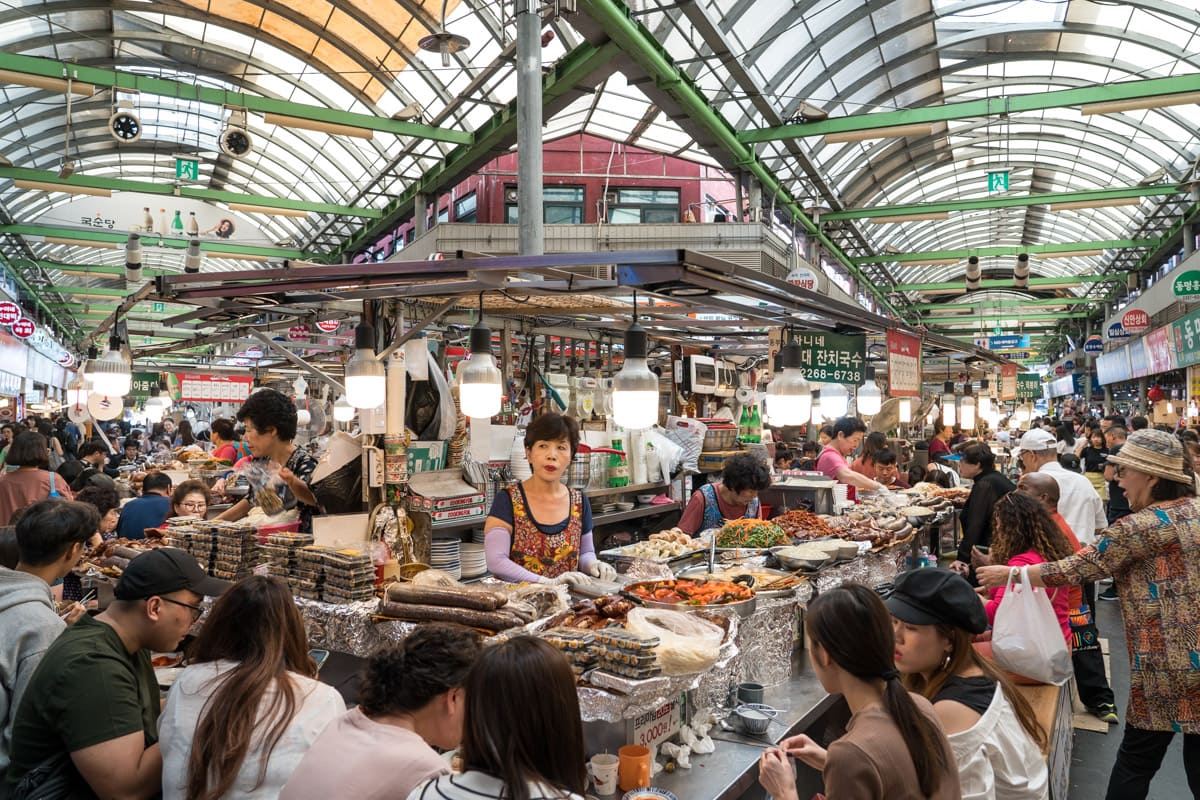
Gwangjang Market, one of the oldest traditional markets in Seoul, is popular with foreign visitors looking to sample some of the best Korean street foods. If you are looking for an authentic Korean cultural experience, along with some of the best bindaetteok in the city, then look no further.
The market, first established in 1905, is today the oldest remaining daily market in Korea.
Gwangjang might not be as well known as nearby Dongdaemun Market and Namdaemun Market, but that doesn’t stop the tens of thousands of visitors who flock here each day to experience a traditional market that shows a side of the city that can’t be found or replicated at some of other more modern, newer, and larger shopping centers and fashion malls found elsewhere in the city.
Covering just 10 acres, Gwangjang Market is a lot bigger than it may seem. In such a compact area, you will find over 5,000 shops and stalls employing around 20,000 people.
Though most visit the market for the street food, many shoppers venture away from the street food to one of the other levels of the market. It is here where you will find a vast selection of vendors selling textiles, silk, linens, bed sheets, hanbok (traditional Korean dress), second-hand clothes, and more.
Many of the vendors stationed here own their own factories which supply fabrics and other goods to nearby markets and department stores including Namdaemun, Dongdaemun, and Pyounghwa Clothing Market.
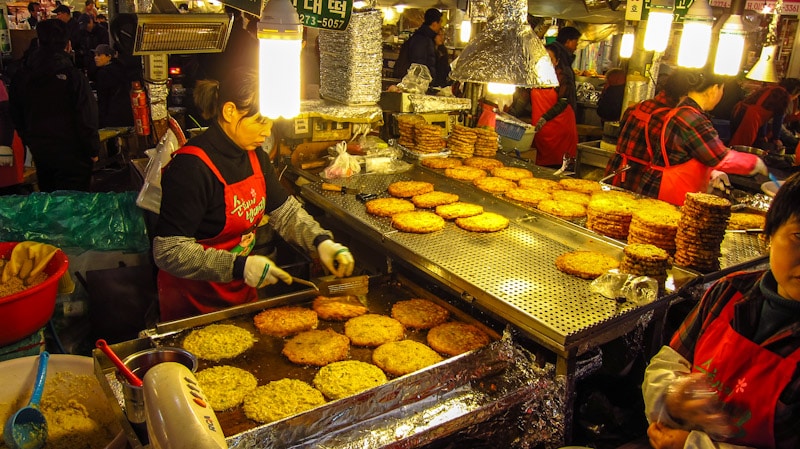
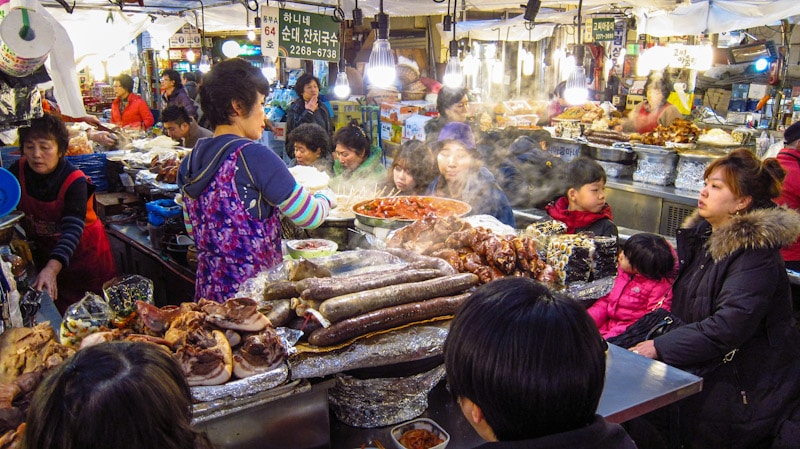
Experiencing Korean street food is a must for any visitor to Seoul. Persuasive food stall owners found along the crisscrossing corridors of the covered Gwangjang Market will try their best to get you to sit down on one of the benches at their stall. This can be a little overwhelming for first time visitors. My best advice? Pick the stall with the food that looks the most appetizing and the stalls that look busy with locals. The locals know what is good and what isn’t.
One of the most famous street foods sold here is bindaetteok or mung bean pancake. This Korean style pancake, fried in oil until it is golden brown, is made using ground mung beans, kimchi, and vegetables such as green onions and peppers. The sight and smell of vendors preparing and cooking bindaetteok is a great experience. Bindaetteok is also great on a cool evening.
Other foods commonly found at affordable prices are tteokbokki (a spicy Korean soft rice cake snack), bibimbap, kimpbap, yukhoe (raw steak tartare), fresh sashimi on a bed of clear noodles accompanied with soy sauce and wasabi, and sundae (blood sausage made out of pig’s intestines).
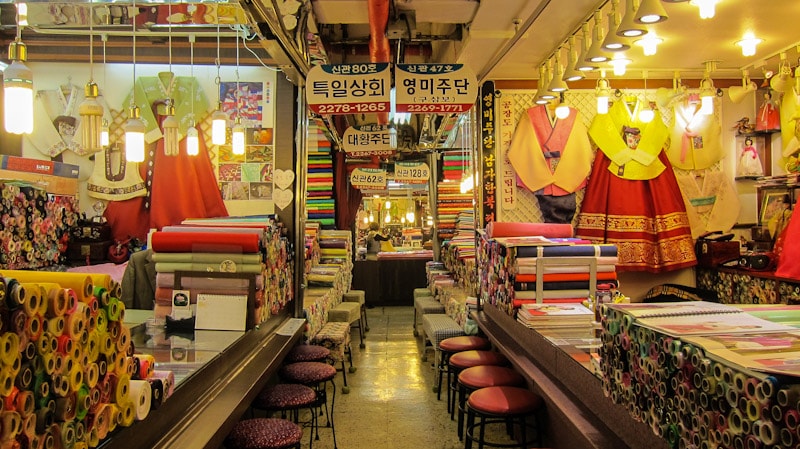
If you’re not hungry, head to the second floor. Here you will find all sorts of textiles, quilts, bed sheets, and traditional Korean outfits known as hanbok. The collection of fabrics sold here are some of the largest and most famous in Seoul. All sorts of colorful fabrics including silk, satin, and linens can be found here.
These high quality yet inexpensive goods sold by many shops are often used to supply other markets in Seoul such as Namdaemun Market and Pyounghwa Clothing Market.
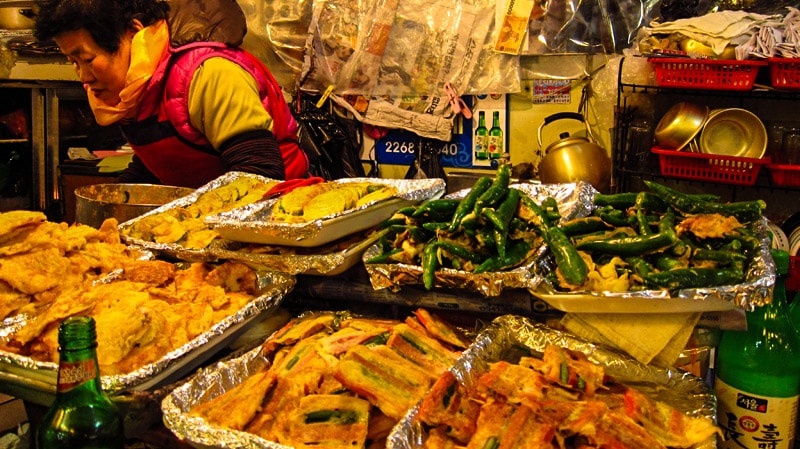
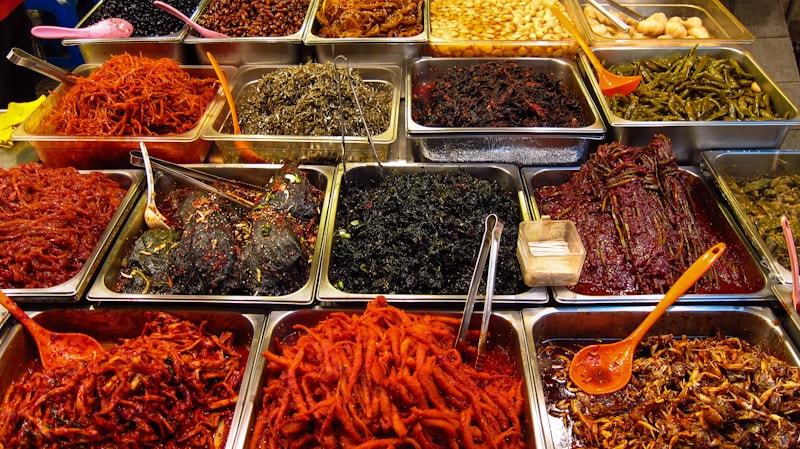
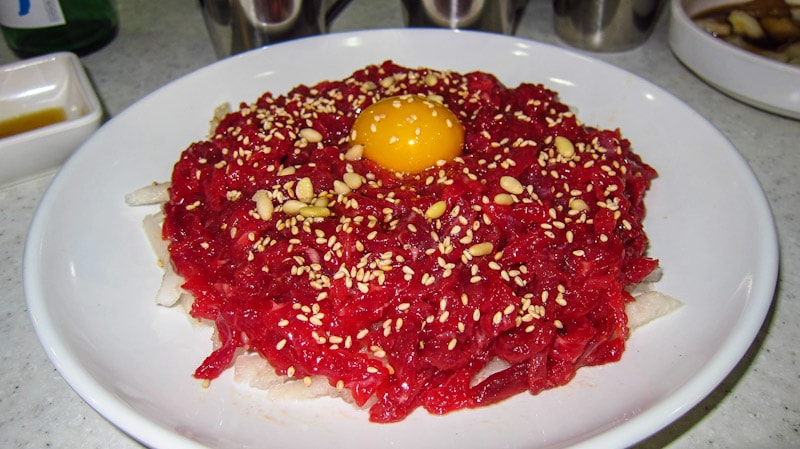
Gwangjang Market Information
Hours
Hours vary by store. Generally, stores are open 9:00-18:00. Some stores open as early as 7:00 and close as late as 19:00.
Except for clothing and food stalls, most stores are closed on Sundays.
Admission
Free
How to Get Here
Take Subway Line 1 to Jongno 5-ga Station (Exit 7).
Gwangjang Market Video
Map
Additional Resources
Viator by TripAdvisor
Viator is a popular online platform that helps travelers book tours, activities, and unique experiences worldwide, including in Seoul. It connects users with a wide selection of options – from sightseeing tours to cultural events and outdoor adventures – all offered by local providers.
Klook
Klook offers discounted tickets and reservations for various attractions and services in Seoul, from theme parks and museums to tours and transportation options.
Rakuten
Save money while exploring Seoul with Rakuten's cashback program. Book your hotels or other services through Rakuten and enjoy cashback rewards and exclusive deals.
If you sign up using the link below, you could earn $30 cashback on your first purchase over $30.
Book Recommendations
For an immersive guide to Seoul, many travelers choose to bring a book along. Fodor's Seoul, for example, offers detailed recommendations on sights, restaurants, maps, and travel tips.
Nearby Sights
Bangsan Baking Market
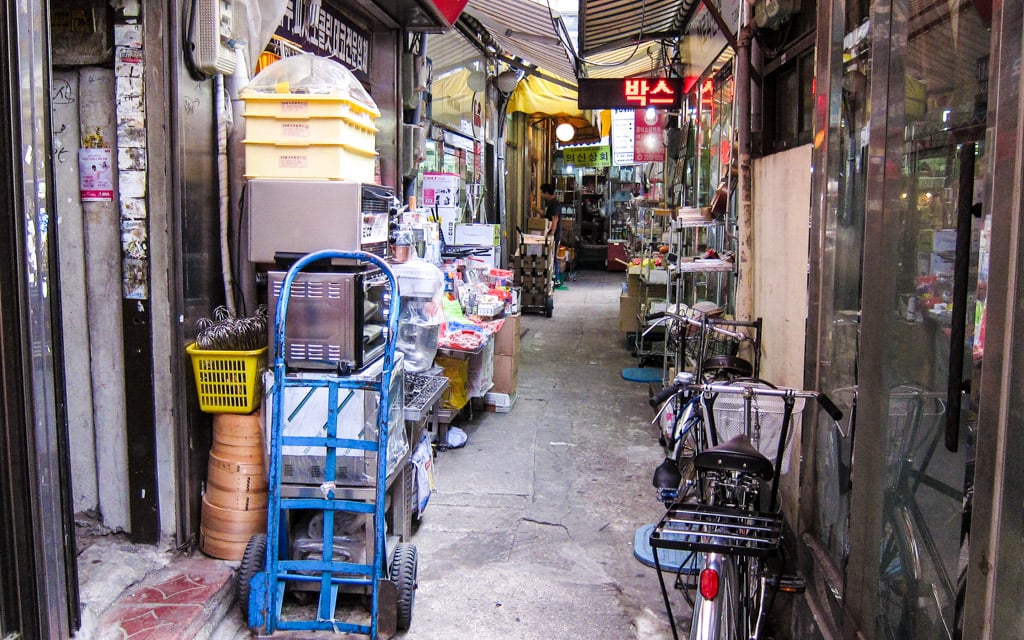
Bangsan Baking Market is a traditional wholesale market where you can find some of the best baking and cooking supplies used by chefs all across Seoul. Over 500 stores supply professional chefs and home cooks with various baking and cooking items at competitive bulk prices. Other items sold here include packaging, shipping, printing, and manufacturing goods.
Jungbu Dried Seafoods Market
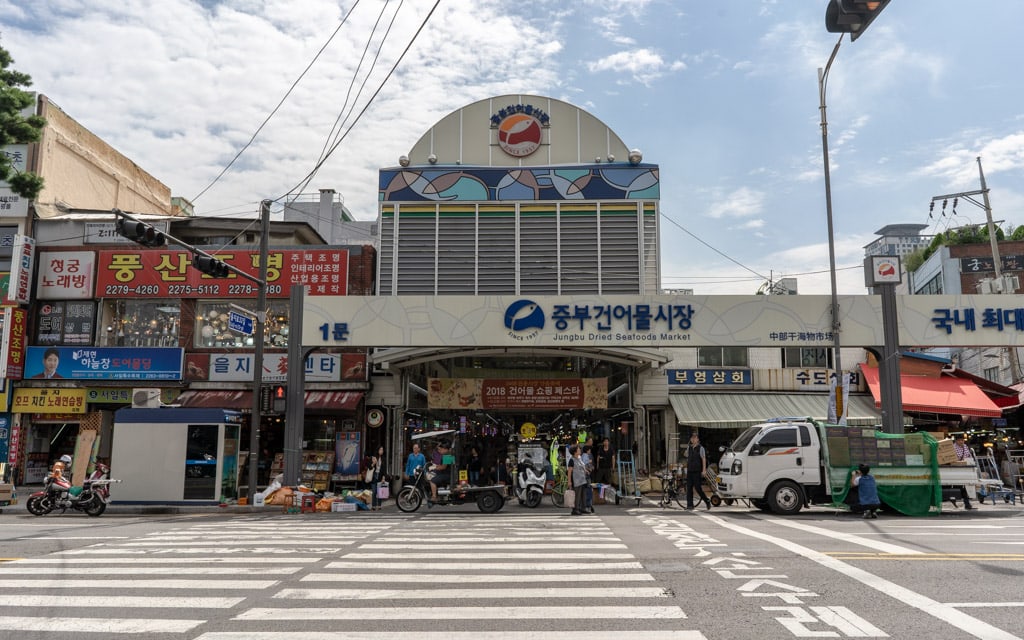
Jungbu Dried Seafoods Market is one of the best shopping spots to find large assortments of dried seafood at prices 30% less than other places in Seoul. Dried seafood items sold here include laver (seaweed), anchovies, squid, pollack, and more. The size of the items vary from the very small to large, full fish.
Dongdaemun Market
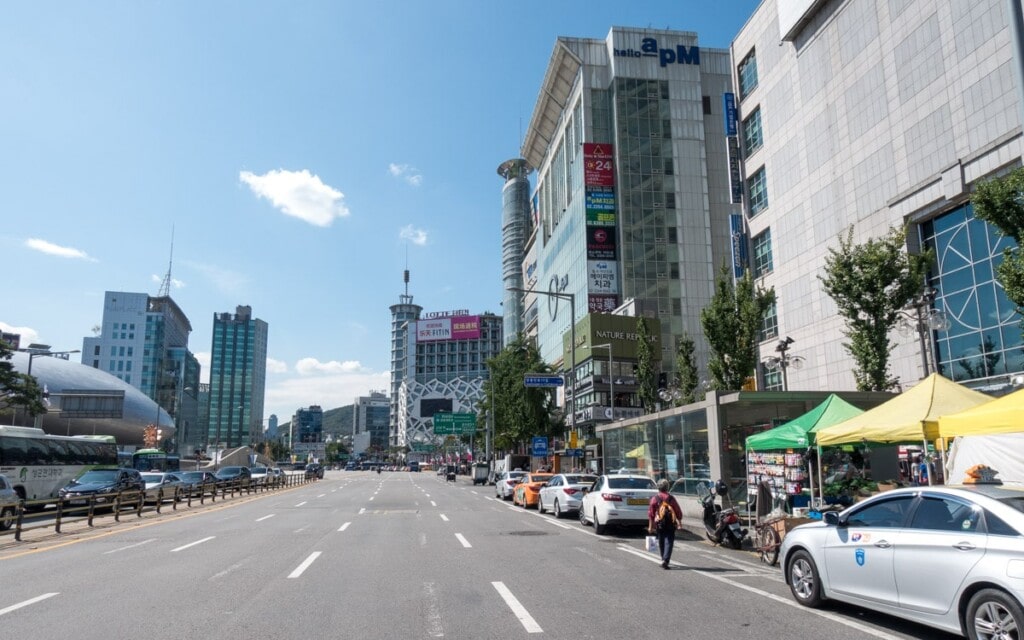
The best time to visit is at night, especially on the weekends, when it is most crowded and alive. Learn to bargain. Usually you can haggle down the price of an item by 20%. Shopping here is 24/7 but many shops are closed on Mondays. Dongdaemun Market is a large commercial district consisting of over 20 shopping malls and traditional markets, 30,000 shops, 50,000 manufacturers.
Jongmyo Shrine
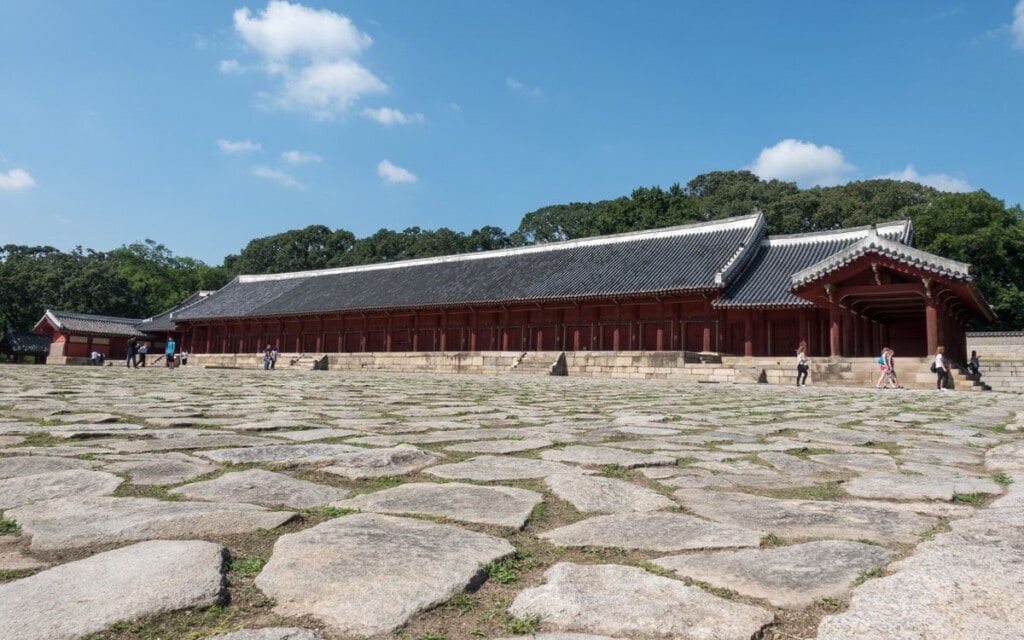
Jongmyo Shrine is the supreme shrine of the state. The site enshrines royal ancestor tablets and hosts memorial services for the kings and queens of the Joseon Dynasty. King Taejo ordered the construction of the Confucian-style shrine, completed in 1395. Taejo, the first Joseon king, built the shrine to honor deceased kings and queens.
Heunginjimun Gate (Dongdaemun Gate)
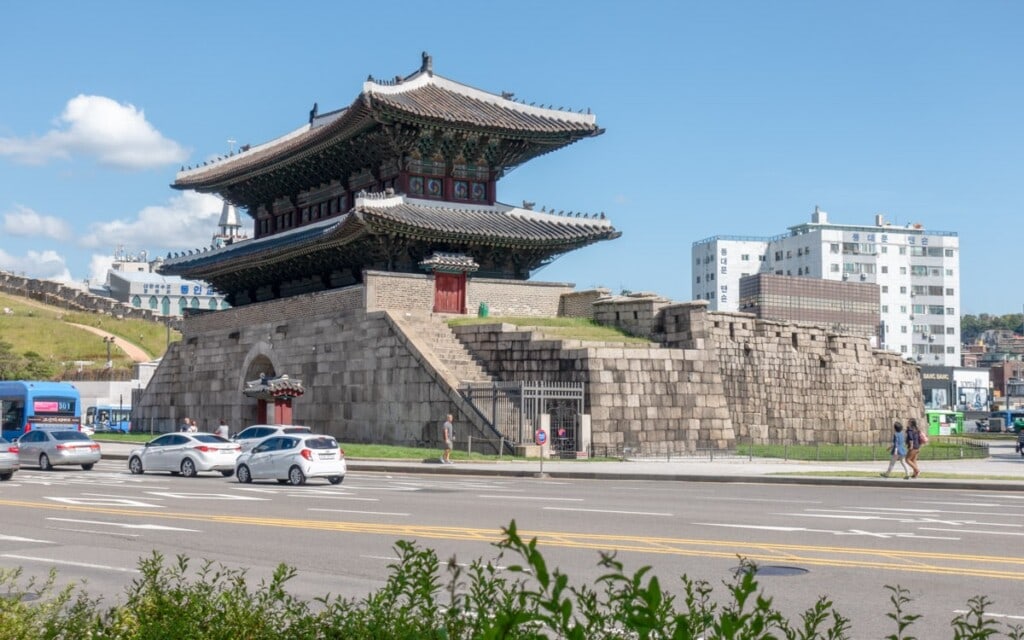
Heunginjimun Gate (Dongdaemun Gate), the historic Great East Gate on the Seoul Fortress Wall, dates back to the beginning of the Joseon Dynasty in 1398. Heunginjimun is now the oldest main gate remaining in Seoul after Sungnyemun Gate (Namdaemun Gate) was destroyed by a fire on February 10, 2008. The gate was originally built in 1396 during the reign 4th year of the reign of King Taejo.
Last Updated on Dec 26, 2021